More Than Metal: An Introduction To Unusual Case Materials
Not all that glitters is gold – sometimes it’s a high-tech ceramic.
Modern watchmakers have a huge variety of case materials to choose from – it almost seems as if anything rigid enough to stick a movement into has been used for a watch case at this point. This was not always true, of course. If you look back at the history of watchmaking, one metal dominates case-making: gold, and with good reason. Gold has a couple of characteristics that make it useful for watch cases, including the fact that it is relatively easy to work, but the most important is that it is almost entirely resistant to corrosion. Occasionally in vintage watch cases, you can see some surface oxidation of the one of the materials alloyed with gold – copper, for instance – but as a rule, a gold watch case, barring physical damage, is forever.
The next big step in watch case materials was the introduction of stainless steel, which is a steel alloy containing chromium. The chromium forms an oxide layer which protects the bulk metal beneath it from further corrosion. Although chromium-iron alloys were being used in the arms industry by the mid-1800s, the first modern stainless steel alloy was developed by the British metallurgist Henry Brearly, in 1912. Up until then, the watch industry’s only alternative to gold, or the less frequently used silver, was gold-plated brass, which would eventually wear through. Introduced to the watch industry under trade names like “Staybrite,” stainless steel began to be more widely adopted by the watch industry after the war, and with continued tweaks to the formula to improve workability and corrosion resistance, stainless steel became the single most commonly used case material by a considerable margin – last August, for instance, the industry exported about 30,000 precious metal watches, versus 615,000 in steel.
However, there are other materials which the industry has adopted for case manufacturing. For various reasons none of them are likely to overtake steel any time soon, but they offer technical or aesthetic benefits – sometimes both – which you can’t get from gold or stainless steel.
Platinum: The Ice Queen Of Precious Metals
It might seem a little much to call platinum an exotic or unusual case material but I think it’s rare enough to deserve a mention, as it has drawbacks and benefits which distinguish it from gold or steel. One of the most important properties of platinum is that, like gold, it is highly resistant to corrosion – in fact, pretty much the only reagent that will dissolve platinum is hot aqua regia, which is a combination of nitric and hydrochloric acid (platinum also reacts vigorously with fluorine, but everything reacts vigorously with fluorine, including chemical lab sand buckets– you can read all about it in the delightfully titled article, “Sand Won’t Save You This Time.“)
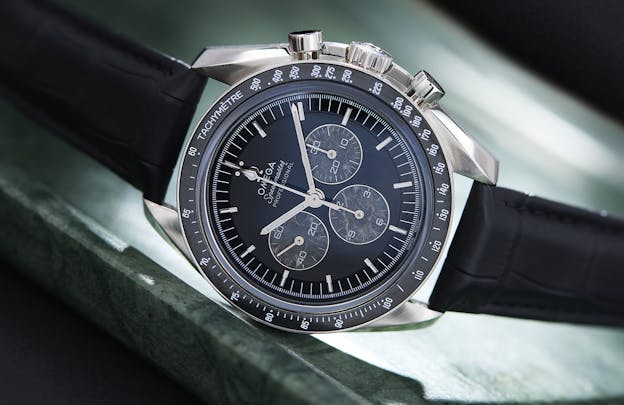
The two potential gotchas with platinum are its weight – Tim Mosso reviewed a platinum IWC Big Pilot’s Watch several years ago and said it was “one of the heaviest watches I’ve ever encountered on the channel,” albeit no Big Pilot’s Watch is exactly a lightweight. In smaller watches, platinum’s mass gives what might feel like an excessively diminutive design a pleasant heft. The other gotcha is that platinum is extremely difficult to machine – it is what machinists call “sticky” as it tends to clump up and stick to the edges of cutting tools, dulling them rapidly. It usually commands a premium over gold as well, despite the fact that it’s usually less expensive per ounce – this may reflect its rarity as a metal, or the fact that machining it is harder. Still, if you’re looking for a perfect material for watch cases, platinum is right up there – except for the Unpleasant Matter Of The Bill.
Tantalum: The Metal Collectors Love, And Machinists Love To Hate
If you thought platinum was the last word in metals that are a royal PITA to work with have I got news for you. Tantalum is everything everybody likes and hates about platinum, but with the volume turned up to 11. One online resource for those wishing to work with the stuff puts it thus: “Machining of tantalum is difficult. It has been described as ‘kind of like machining copper with the hardness of titanium.’ Especially annealed tantalum may cause problems, being ‘sticky’, as well as having a strong tendency to seize, tear and gall.” On top of that tantalum has to be thoroughly lubricated and kept cool during machining, or it may actually ignite.
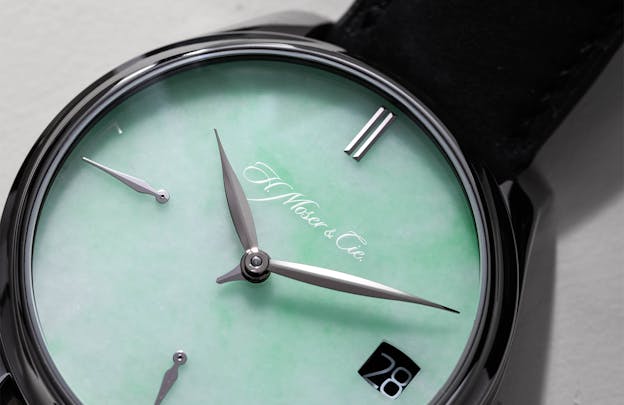
For these reasons tantalum, although much more widely known among collectors nowadays than it used to be, partly thanks to its use in limited editions by companies like F.P. Journe (although Journe does offer a series produced watch in tantalum as well – the Chronomètre Bleu) is still a rarity as far as case materials go. It is, however, unique in its aesthetics – the metal has a very captivating lustrous deep blue color, and it’s very hard so it won’t lose its luster over time. The fact that it’s so difficult to machine also means it’s pretty exclusive, much more so than gold or platinum.
Ceramics: The Ultimate In Scratchproof Case Materials
Ceramics are a wide range of different materials, ranging from pottery materials like terracotta and porcelain all the way up to high strength industrial ceramics, some of which are metal oxides, which include silicon dioxide, various carbides including titanium carbide and silicon carbide, and aluminum oxide, which can occur naturally in the form of large, pure corundum crystals, better known as rubies.
Because the term “ceramics” covers such a wide range of materials there are a correspondingly wide range of cases made from the different ceramics. The whole history of ceramic cases begins with the introduction of tungsten carbide cases by Rado, in the 1960s although these are arguably not actual ceramics, but rather sintered alloys, in which powdered raw materials are pressed together to form a solid mass in which the materials are still chemically distinct. An early pioneer in ceramic cases was IWC, who released a Da Vinci Perpetual Calendar in a black zirconium oxide case in 1985, and Seiko, who released the 1000M Professional Diver in 1986, with a ceramic outer shroud.
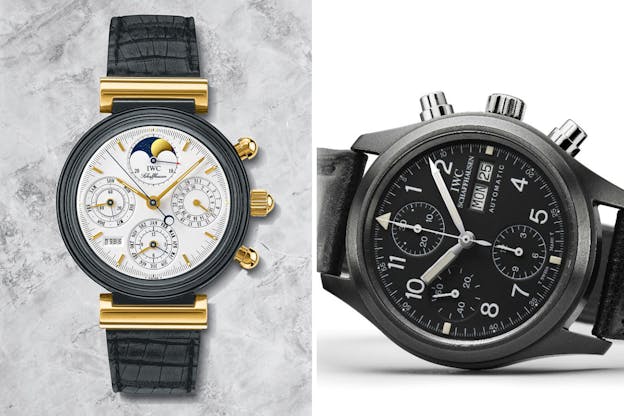
Ceramic cases are used today across a broad spectrum of brands and models – it’s used both for its technical and aesthetic properties. The biggest advantage to ceramic cases in general is that they’re impossible to scratch under normal circumstances, so a ceramic case is going to look factory fresh in ten, twenty, or even a hundred years. They don’t corrode or degrade chemically at all – someone asked Picasso in his later years why he was spending so much time making ceramic sculptures and he said, “Because shards are forever.”
The main disadvantage to ceramics is that they have what’s called a “brittle failure mode,” which is to say that they don’t bend, they break. However, under normal circumstances modern high performance industrial ceramics are far more fracture resistant than something like porcelain – the industry makes ceramic cases in the thousands every year and while occasionally one does shatter if dropped onto a hard surface like a concrete or marble floor, as a rule, they’re very tough. Advanced ceramics are used in, among other places, jet engine turbines and combustion chambers, so it’s not as if they’re going to shatter if you look at them crosseyed.
Carbon And Carbon Composites: The Formula One Connection
Carbon fiber, in the form of carbon fiber composites and so-called “forged carbon” are like ceramics a somewhat niche material which has gotten mainstream visibility, thanks to its use in watch cases and even watch movements, from companies like Richard Mille, who was the first to use carbon fiber for a movement plate in the RM 004 V2, in 2005. Carbon fibers can be woven, to produce a fabric-like mesh pattern – this is the type usually seen in watch dials, rather than watch cases – and you can also make what’s sometimes called “forged carbon” in which short strand fibers are mixed with some sort of polymer resin and molded. In both cases the material is difficult to machine, but forged carbon lends itself better to watch cases as it can be used to make more versatile shapes than woven carbon fiber.
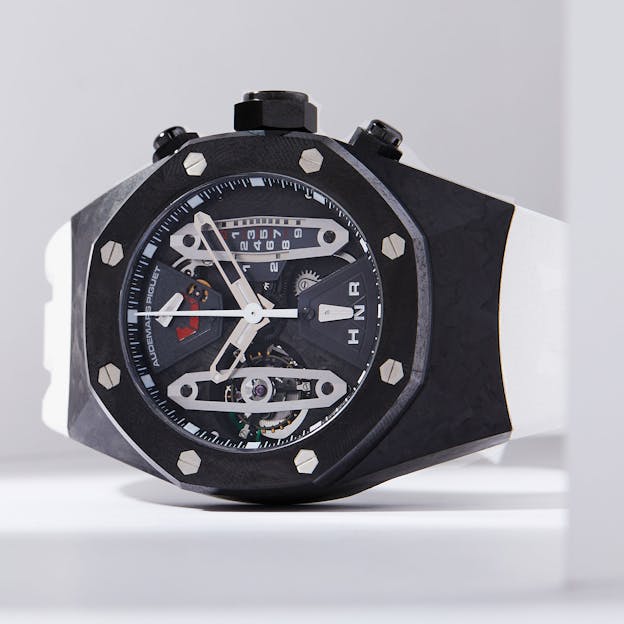
There are a couple of technical advantages to carbon fiber cases (and movement components). One of them is that the material is both very strong and very light, and like advanced ceramics, such composites are often used in the aerospace industry, where lightness and rigidity are essential, as well as in Formula 1 racing and high performance sports cars. And, of course, any cycling enthusiast knows that carbon fiber bicycle frames are the last word in advanced materials technology for biking as well.
There are few if any major drawbacks to carbon fiber, other than the fact that with a hard enough blow, carbon fiber composites can chip (although to put that in perspective, no case material is indestructible). Such chips are usually minute. The only other problem is that the material is abrasive, which wears cutting tools, and since it’s also a poor heat conductor, it’s a challenge to control temperature although this is obviously a problem for the manufacturer rather than the consumer.
Titanium: The Original Tough Guy For Watch Cases
Of all the non-conventional case materials, titanium is the one that comes closest to being conventional – it’s lighter and stronger than stainless steel (it wouldn’t have been used for the airframe for the SR-71 Blackbird if it weren’t). It’s highly resistant to corrosion, via the same basic mechanism as stainless steel – a surface oxide coating forms which protects the bulk metal underneath from any further oxidation – and as it’s a poor thermal conductor, it remains pleasantly cool to the touch even in hot weather. One further practical advantage it has over stainless steels is that it’s hypoallergenic – some people develop a rash when wearing a stainless steel watch or bracelet, thanks to a nickel allergy.

There are probably fewer downsides to titanium than any other alternative case metal – it’s harder to machine than stainless steel but nowhere near as challenging as platinum or tantalum. The only really problem is that it’s fairly soft and scratches easily. Historically this has meant that the first generation of titanium watches, like Citizen’s 1300M diver from 1982, or its first titanium watch ever, the X-8 Chronometer from 1970, had a sort of matte finish. Today companies that make extensive use of titanium, including Citizen, Seiko, and Grand Seiko, usually apply a surface hardening treatment like Citizen’s Duratect, or Grand Seiko’s High Intensity Titanium. Titanium can also be heat tempered to a deep cornflower blue, or even yellow; such heat-colored cases are a mainstay of De Bethune’s case production.
Bronze: Ancient Solution For Modern Problems
Bronze as a case material for watches has some very pronounced ups and downs – well, let’s say, definite appeal mixed with possible drawbacks, depending on how much you know about what you’re getting into. Bronze is a material we’ve been using long enough to have an entire age of civilization named after it; Homer wrote of the “pitiless bronze” of ancient swords and spears, and bronze was used to cast the first cannon, as well as some of the earliest clock parts.
The material has a distinctive warm glow – it’s an alloy of copper and tin, often with other materials added in to increase strength and resistance to corrosion. The big appeal of bronze in a watch case, is that the material will patina over time – the patina starts out as a copper oxide and eventually becomes a copper carbonate. Every bronze watch will patina slightly differently, but in general the patina layer will darken over time with some variations in surface coloration. The Tudor Black Bay Bronze is one example of a modern bronze watch.

In general, bronze is pretty resistant to actual corrosion, and this can be seen in the fact that bronze objects that are hundreds and sometimes thousands of years old are often well preserved. Bronze alloys are also used in marine applications, like valve fittings on standard diving dress (hardhat diving) outfits, as well as ship’s propellers and submerged bearings – most modern bronze cases are actually made from bronzes alloyed with aluminum, which are specifically formulated for marine applications. If you’re going to dive or swim frequently with a bronze watch the only advice I’d give is to make sure you rinse the watch in freshwater and dry it after immersion, since it’s really the combination of salt water and oxygen in the atmosphere that can lead to accelerated corrosion.
Sapphire: The Most Opulent Of Watch Case Materials
Synthetic sapphire has been a mainstay of the watch industry for many years, but historically it was only found in watch crystals, where it offers a lot of the same advantages as other ceramics – technically, you could classify sapphire as a ceramic under the broadest definition of the term, as sapphire is basically gem-quality aluminum oxide (as are rubies; rubies and sapphires are chemically the same thing, differing only in color). The big advantage of sapphire as a technical material in watch crystals, is that the only thing that will scratch sapphire is diamond, and if you are living a life where there is a risk of your diamonds scratching your sapphires, bless you for having first world problems.
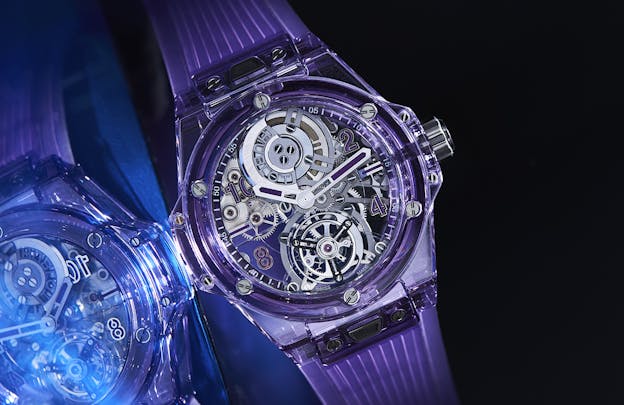
Sapphire’s big potential gotcha is the same as for any other high performance ceramic: its failure mode is brittle which means it will shatter rather than bend or crack. For watch cases, the choice of synthetic sapphire is almost purely an aesthetic one; such cases are extremely expensive and difficult to manufacture thanks to the challenges involved in growing the raw sapphire crystals, and cutting and polishing them to the desired shape. There really is nothing else like them, though – one recent example we looked at for A Watch A Week was the Hublot Big Bang Automatic Tourbillon Purple Sapphire, which is as good an example as I can think of, of what you can do with synthetic sapphire that you can’t do with anything else.

